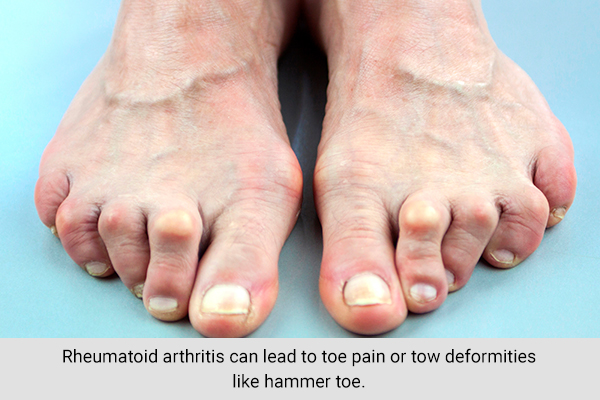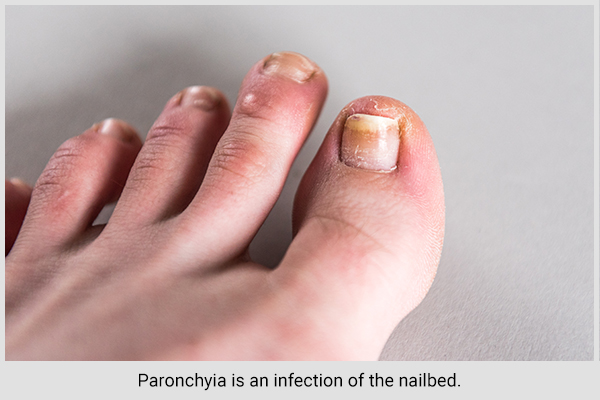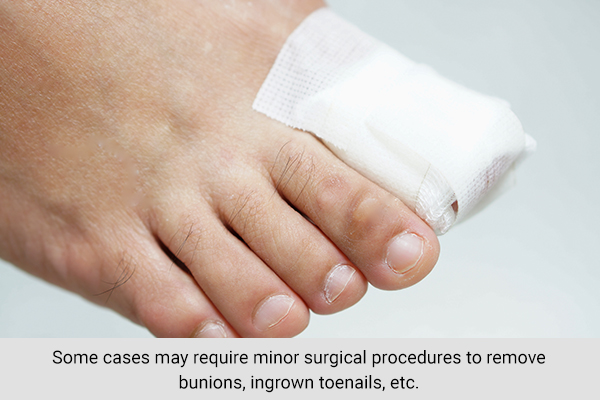In this article:
Big toes are essential for maintaining balance while walking and preventing gait issues, (1) and stubbing your big toe can be an annoyingly painful experience. While considered a very minor injury, a sore big toe can be an inconvenience for many people.

This article will discuss some of the causes of sore big toes and how to cure them easily:
Causes of a Sore Big Toe
While stubbing your big toe against a hard surface is a common cause of a sore toe, here are some other causes for it:
1. Injury
If you play a sport or are physically active, you can sprain or bruise your big toe accidentally. Rarely, athletes may also fracture their big toe.
Stubbing your big toe is, of course, the most common toe injury. (2)
2. Osteoarthritis (OA)
Osteoarthritis can cause pain or stiffness in the big toe. It is commonly reported in middle-aged and elderly people. (3)
3. Rheumatoid arthritis (RA)

Rheumatoid arthritis is a more severe form of arthritis. It causes pain and inflammation in the joints. Rheumatoid arthritis can also lead to toe pain or toe deformities such as hammer toe. (4)
4. Bunions
A bunion, or hallux valgus, is a common toe problem, especially in women. It causes the base of the toe to become enlarged.
Bunions can be caused by wearing very tight shoes. (5)
5. Gout
Gout is another form of arthritis that occurs due to an increased amount of uric acid in the body. It can commonly affect joints such as the toes, elbows, and knees. Gout can lead to pain and inflammation in these joints. (6)
6. Raynaud phenomenon
Secondary Raynaud phenomenon is a condition that causes the blood vessels in the extremities such as the toes and hands to constrict on exposure to cold air. This can lead to sore toes in the long run.
Raynaud phenomenon can make the skin of hands and feet appear blue or pale. (7)
7. Nail infection (paronychia)

Paronychia is an infection of the nail bed. It occurs when bacteria or fungi enter the skin fold under the nail due to an injury or cut. (8)
Common Symptoms of a Sore Big Toe
Some common symptoms of a sore big toe are:
- Pain or discomfort while walking
- A toe that feels tender to touch
- Inflammation or bruising (9)
Treatment Modalities for a Sore Big Toe
Here are some common treatment methods recommended by most doctors for a sore toe:

- Pain medication: Common painkillers such as ibuprofen and paracetamol can be taken to reduce the pain. Do not take them if you have an active stomach ulcer or a history of gastrointestinal bleeding.
- Proper footwear: Better-fitting shoes should be used to prevent wear and tear to the feet. In some cases, doctors may ask you to wear special orthotic shoes.
- Surgery: Some cases may require minor surgical procedures to remove bunions, ingrown toenails, etc.
- Injections: Anti-inflammatory injections and painkiller injections can be used in severe cases. (9)
Diagnosis of a Sore Big Toe
A doctor can easily diagnose the cause of your big toe pain by examining the area. They may ask you some questions about your physical activity, amount of time walking, and duration of the pain.
Sometimes, you may be asked to undergo an X-ray to determine the cause of the pain. (10)
When to See a Doctor
You should consult a doctor if:
- Your sore toe is making it very difficult to walk.
- The pain does not go away or keeps coming back.
- The pain has lasted more than a couple of weeks.
- You have diabetes. People with diabetes should get any foot problem checked out by a doctor as soon as possible.
- You have a sprain or fracture.
- You have symptoms of an infection such as swelling, pus, nausea, fever, etc.
- You have severe pain.
- There is a loss of sensation in the foot or toe.
- You heard a snap when your toe was injured.
- Your toe is pointing at an odd angle.
Final Word
There can be many different reasons for big toe pain.
Minor pain due to stubbing or hurting the toe may resolve itself in a few days. However, if your toe pain persists for a long time, it may be best to consult a doctor for proper treatment.
 Continue Reading5 Home Remedies for a Sore Big Toe and Self-Care Tips
Continue Reading5 Home Remedies for a Sore Big Toe and Self-Care Tips
- Was this article helpful?
- YES, THANKS!NOT REALLY


